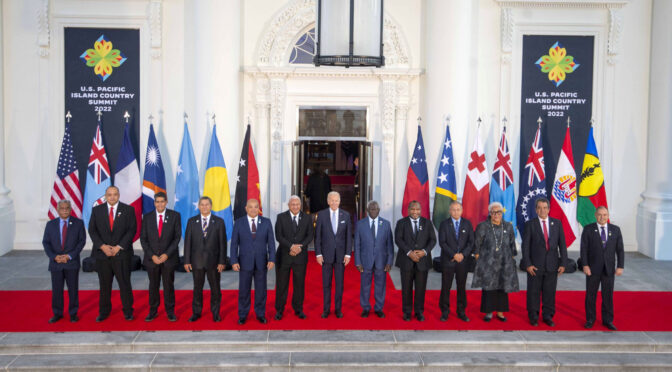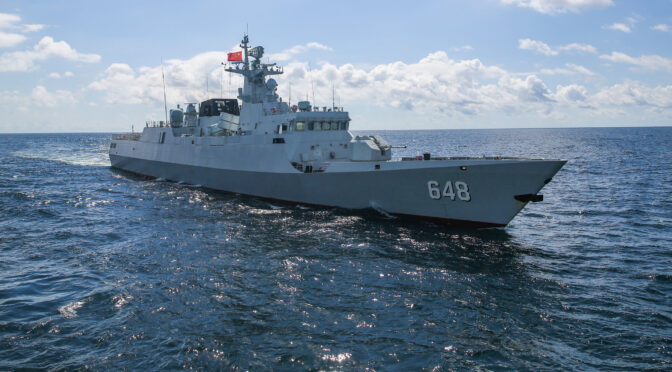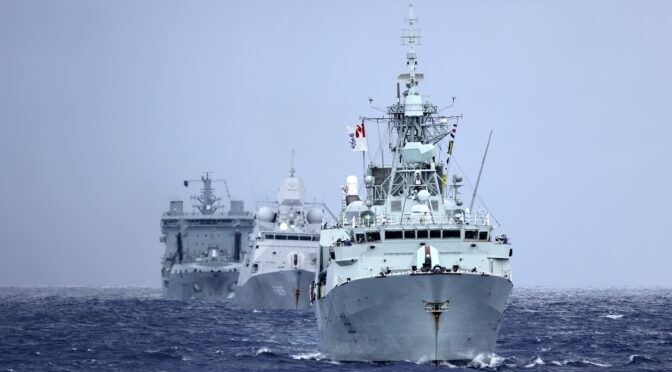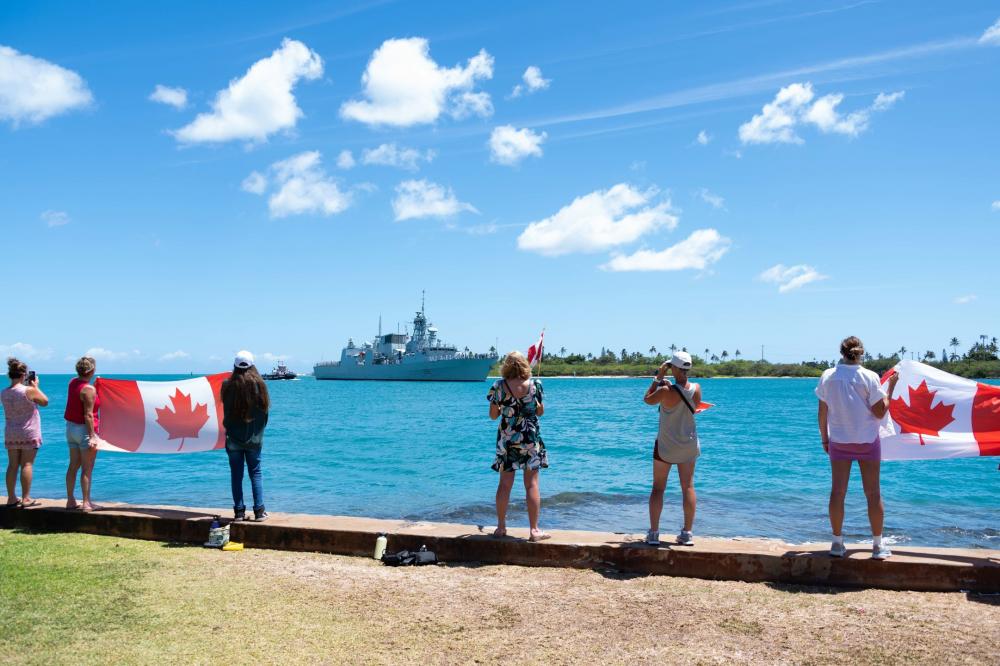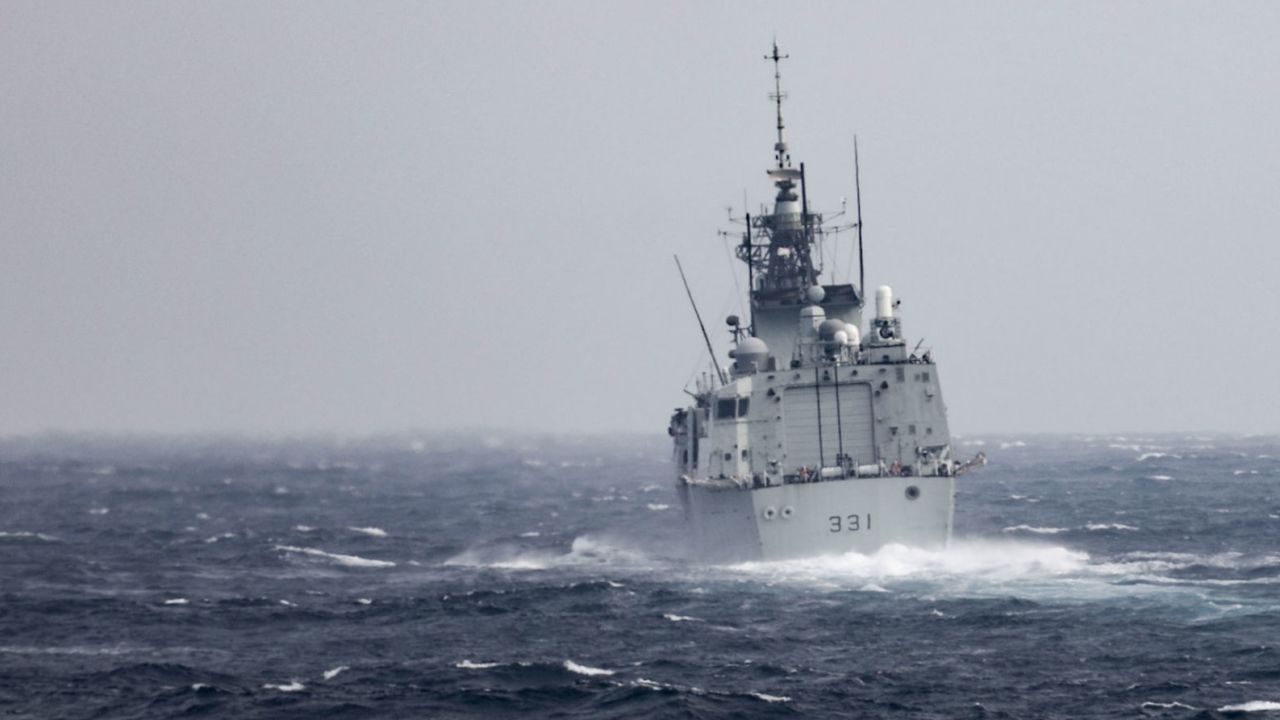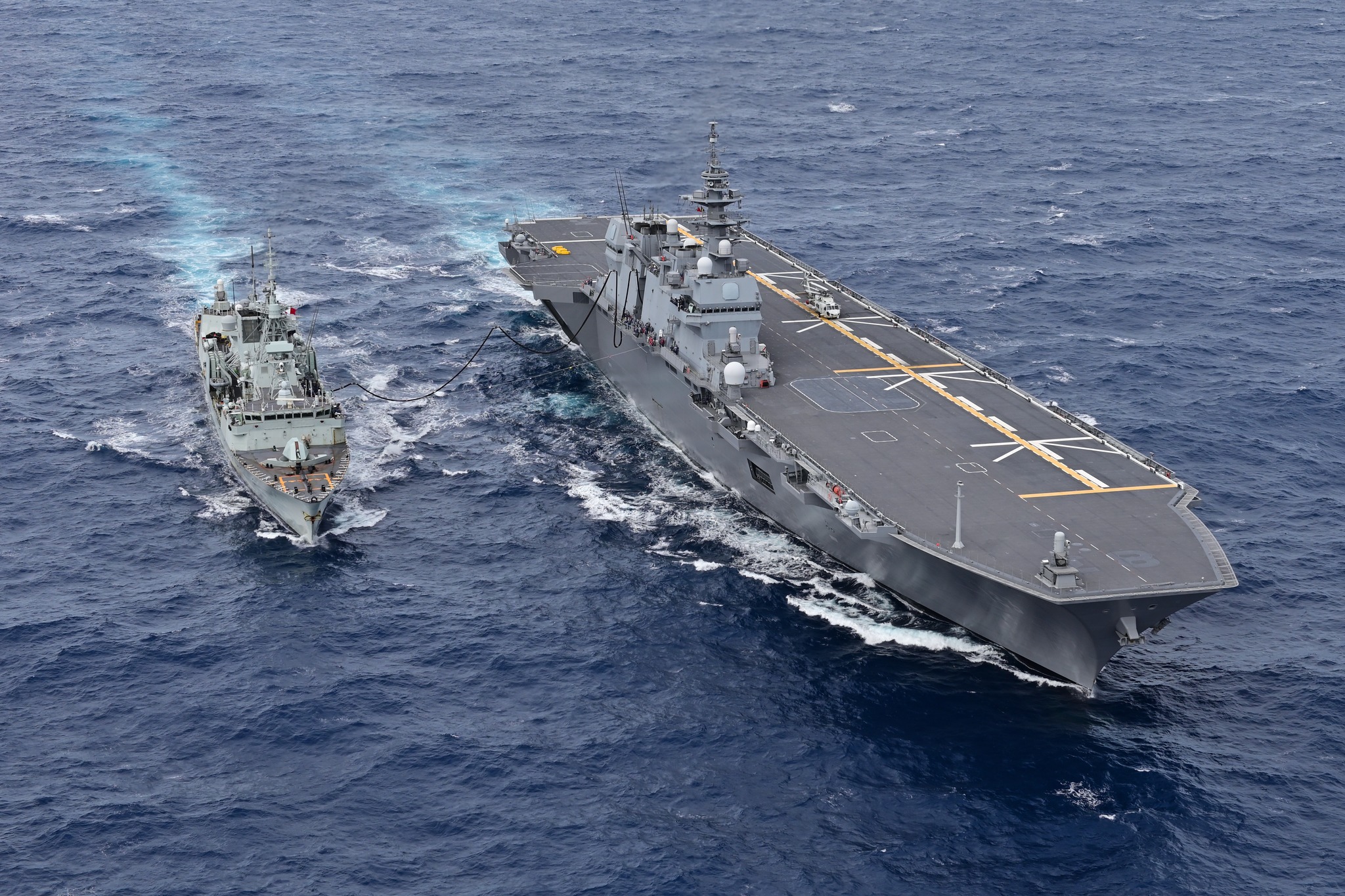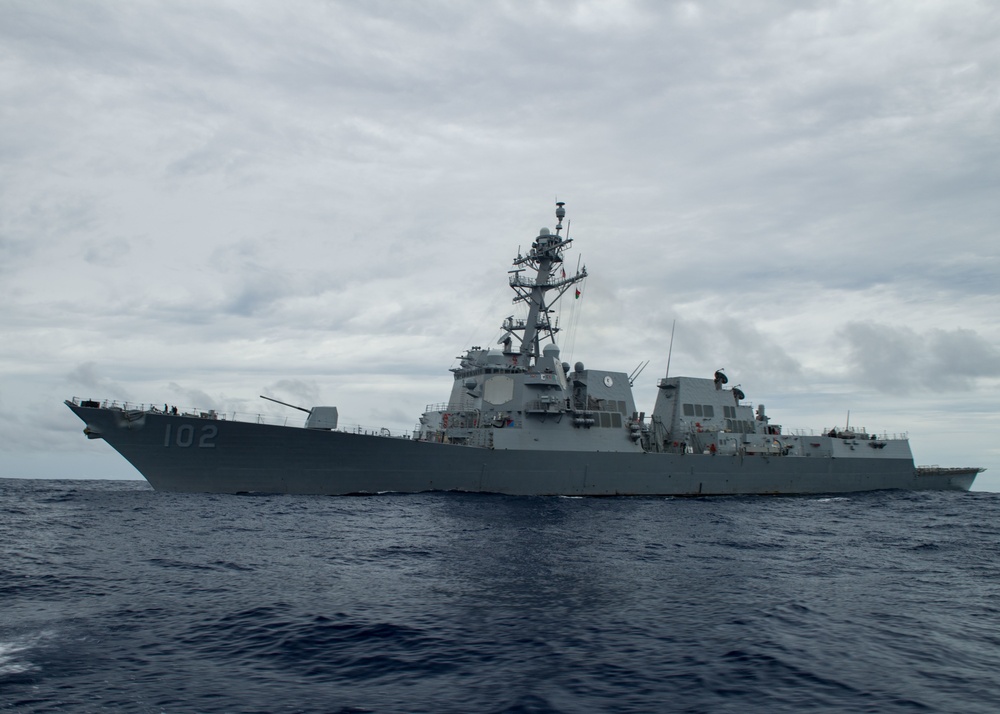By Captain Tuan N. Pham (ret.)
“As an Indo-Pacific power, the United States has a vital interest in realizing a region that is open, interconnected, prosperous, secure, and resilient.” –2022 National Security Strategy
“We will focus on every corner of the region, from Northeast Asia and Southeast Asia, to South Asia and Oceania, including the Pacific Islands.” –2022 Indo-Pacific Strategy
“The United States is a proud Pacific Power. We will continue to be an active, engaged partner in the region…The history and the future of Pacific Islands and the United States are inextricably linked.” –2022 Pacific Partnership Strategy
Last September, Washington published the Pacific Partnership Strategy (PPS), the first ever U.S. government strategy dedicated to the Pacific Islands after decades of American disengagement. Pundits, to include this author, immediately began to question whether the new strategy was too little and too late or exactly right and just in time to curtail the deepening Chinese political, economic, and security inroads that threaten to render the United States regionally irrelevant. China undoubtedly will not back down and likely push even harder across the diplomatic, information, military, and economic (DIME) domains, as evidenced by Chinese President Xi Jinping’s nationalistic speech at China’s 20th National Party Congress on 16 October and disingenuous remarks at G20 Summit in Bali on 15 November.
To Chinese Communist Party (CCP) members and the Chinese people in October, Xi confidently reiterated China as a global alternative to the United States and a more reliable and enduring partner, especially for developing (and vulnerable) countries. The recurring Chinese theme is a derivative of the central narrative from the 4 February joint statement of Russian President Vladmir Putin and Xi, where they boldly declared a shift in the global order, one in which the United States and the Western-biased liberal international order do not lead. To G20 members and the international community a month later, Xi took a more tactful and modest tone, calling for “not drawing ideological lines or promoting group politics and bloc confrontation that will only divide the world, and hinder global development and human progress” — a subtle jab at the 2022 PPS, 2022 Indo-Pacific Strategy (IPS), and 2022 National Security Strategy (NSS).
Beijing likely believes that it must respond in the context of today’s Great Power Competition and tomorrow’s Chinese Dream. The strategically situated region expands China’s growing exterior sphere of influence (and interior security periphery), extends the expansive and ambitious Belt and Road Initiative (BRI) line of communication to the Americas, and presents another steppingstone toward national rejuvenation. Beijing may also believe that it has an opening strategic window of opportunity of perceived U.S. domestic and foreign weaknesses that it can exploit. How then should Washington respond and adjust accordingly its new strategy to curb Beijing’s increasing encroachments into the South Pacific? The short answer is with asymmetric reciprocity, contesting Beijing across the interconnected DIME domains for the hearts and minds of Pacific Islanders and become an enduring “Pacific Power” in both words and deeds.
The Pacific Partnership Strategy
The new strategy takes the Pacific Islands Forum (PIF) as its guiding principle, “…to strive for effective, open, and honest relationships and inclusive and enduring partnerships based on mutual accountability and respect with each other, within the subregions, region, and beyond.” The PIF empowers the Pacific Island nations to collectively speak with one voice on shared interests, values, and priorities. The strategy seeks to roll back growing Chinese regional influence and rebuild diminished U.S. regional influence and credibility, aligning well with the higher IPS (February 2022) and NSS (October 2022), which call for a “free, open, interconnected, secure, resilient, and prosperous region.” The PPS contains four bedrock objectives (OBJ):
- A strong U.S.-Pacific Islands partnership
- A united Pacific Islands region connected with the world
- A resilient Pacific Islands region prepared for climate change and other 21st century challenges
- Empowered and prosperous Pacific Islanders
Underpinning these objectives are ten interconnected lines of efforts (LOE) designed to advance the Pacific Islands’ priorities as outlined in the 2050 Strategy for the Blue Pacific Continent. All in all, U.S. strategists and policymakers crafted the PPS around the key themes of deeper and broader regional engagement and combating climate change, the region’s “greatest existential threat to the livelihoods, security, and well-being of the peoples of the Pacific.”
U.S. diplomats synchronized the PPS’ rollout as the cornerstone for the first-ever U.S.-Pacific Islands Country Summit in September. At the summit, they pitched closer relations with the Pacific Islands through “shared history, values, and people-to-people ties…and broadening and deepening cooperation on key issues such as climate change, pandemic response, economic recovery, maritime security, environmental protection, and advancing a free and open Indo-Pacific.” However, Special Presidential Envoy Ambassador Joseph Yun said it best when he stated that in the contest for the region’s hearts and minds, “What the Pacific countries are looking for is a long-term, sustainable relationship and not just [the United States] paying attention now and then.” In other words, the United States must put its money where its mouth is and close the say-do mismatch by not over-promising and under-delivering, but giving real commitments in the coming years (and decades). Fortunately, the United States also committed $810M to implement the PPS, including the following:
- To build a strong U.S.-Pacific Islands partnership, Washington will conclude negotiations for the Compacts of Free Association, South Pacific Tuna Treaty Annex Amendments, and associated Economic Assistance Agreement for 2023 and Beyond; and expand the U.S. diplomatic mission through increased presence and enhanced infrastructure (reopening embassies, reappointing ambassadors, and expanding interagency engagement).
- To build a united Pacific Islands region connected with the world, Washington will appoint the first-ever U.S. envoy to the PIF; encourage connectivity with other multilateral groupings like the Association of Southeast Asian Nations and the Quad; and bolster the Partners in the Blue Pacific to better meet the needs of people across the region.
- To build a resilient Pacific Islands region prepared for the climate crisis and other 21st century challenges, Washington set aside millions for a climate change resilience, ocean and weather data collection, and the new Resilient Blue Economies Initiative aimed to “strengthen marine livelihoods by supporting sustainable fisheries, aquaculture, and tourism;” and directed the U.S. Trade and Development Agency to help Pacific Islands countries develop “climate-resilient and adaptive infrastructure.”
- To build more empowered and prosperous Pacific Islanders, Washington will request a 10-year $600M Economic Assistance Agreement from Congress.
Altogether, these targeted actions will contest Beijing’s activities in Oceania, “…going island-by-island from a national level down to the village level.”
What may be Lacking or Missing
While the PPS is a timely diplomatic initiative, it is unlikely to resonate immediately with Pacific Island nations. As Australia-based Lowy Institute research fellow Mihai Sora noted, “Pacific cultures have long memories and it will take time to win Pacific countries’ trust that the United States’ strategic intent in the region is genuinely to their benefit.” The enduring challenge for future U.S. Administrations remains sustained and consistent implementation to prolong generated mutual trust and confidence. That said, a couple policy adjustments may be warranted now before going too far ahead.
Firstly, as underscored in the current NSS, Washington should consider greater attention to countering transnational organized crime (TOC) beyond the passing mentions of “challenges to security and sovereignty in the maritime domain” in OBJ 3 (a resilient Pacific Islands region) and “eliminating drug trafficking and other maritime security matters…counter threats such as IUU fishing, wildlife, and drug trafficking” in LOE 6 (support marine conservation, maritime security, and sovereign rights). TOC is one of the root causes of human suffering and socioeconomic instability. TOC undermines regional and local governance, feeds violence in local communities, and threatens public safety and health. TOC manifests itself in many forms in Oceania, from drug and human trafficking to money laundering and illegal fishing. These illicit activities degrade regional security and stability by undermining the rule of law, fostering corruption, and exploiting and endangering vulnerable populations.
From the outside, the region appears to fare better than others in terms of criminality. According to the Organized Crime Index, the Pacific Islands region has a criminality score of 3.07, which is much less than the global average of 4.87. However, although criminal actors are lesser in numbers, their relative impacts are significant in these smaller economies and societies… “In contexts where senior state officials are not well paid, the potential for criminal actors to subvert governance by way of bribery is high. Meanwhile, countries such as Tonga and Samoa are having to deal with the socio-economic impacts of increasing drug use and addiction with scarce resources.”
In the Indo-Pacific, there is also a growing concern that China may be leveraging TOC to realize its revisionist and revanchist ambitions (the Chinese Dream) and advance its power projection across the region and beyond. The concern stems from the ubiquitous and controversial BRI. In addition to China and its state partners, Chinese criminal enterprises (CCE) are also using the BRI to expand their economic and political influence, albeit for monetary gain. Many of tbe BRI’s infrastructure projects overlap with and stretch over extant illicit trafficking routes. The more regional countries integrate themselves into the BRI, the easier it becomes for CCE to recruit new members, acquire new clients, diversify their portfolios, and outsource their criminal operations and activities to less-developed countries with laxer laws and lesser law enforcement capabilities and capacities.
Secondly, Washington should consider moderating LOE 7 (support good governance and human rights of all people) to guard against the narrative of imperialist America imposing its culture, values, and will to the region and local populations. Washington can focus on activities to promote good governance but take a more measured and incremental approach toward human rights to overcome extant cultural biases in several Pacific Island nations. Otherwise, China will exploit the narrative to expand and deepen its inroads into Oceania with its own counter-narrative: We are interested in providing you with opportunities to drive economic growth, development, and prosperity. We are not interested in lecturing you on human rights or imposing our beliefs and values on you. As a fellow victim of colonial rule, we understand you and respect your sovereignty, independence, and right to choose your own path.
Too Little and Too Late or Exactly Right and Just in Time?
Last May, China’s Foreign Minister Wang Yi conducted a 10-day diplomatic tour of the Pacific Islands, visiting eight countries (the Solomon Islands, Kiribati, Samoa, Fiji, Tonga, Vanuatu, Papua New Guinea, and Timor Leste), holding virtual meetings with three additional nations (Cook Islands, Niue, and Federated States of Micronesia), and hosting the second round of the China-Pacific Islands Countries Foreign Ministers Meeting in Fiji. The visit underscored Beijing’s determination and commitment to expand and deepen its regional influence, extend its sphere of influence into Oceania, and asymmetrically counter the IPS.
During the lengthy visit, Yi proposed a sweeping multilateral agreement on a range of issues (building police forces, digital governance, cybersecurity systems, etc.) to strengthen Beijing’s growing political, economic, and security ties with the region, but then quickly withdrew the agreement due to an apparent lack of support from the Pacific Island countries. Nevertheless, the visit and agreement revealed three key takeaways that underscore the strategic urgency to curtail China’s political, economic, and security inroads before they solidify and become permanently embedded into the local governments, cultures, and institutions.
- Wang’s trip did not accomplish all of China’s goals, but Beijing remains committed to expanding its influence into the Pacific Islands.
- Many Pacific Islands countries remain wary of China’s intentions, especially related to security issues.
- Although the region refused to be rushed into a multilateral deal, Pacific Island nations are still open to China’s engagement but on their terms.
The time to act is today. It is much easier to slow or stop China’s progress now than it is to wait for it to gain momentum later. Inaction, or worse yet, retrenchment, would further embolden Beijing’s regional goals to expand to the other Pacific Island nations from Kiribati to the Solomon Islands, and eventually transform Oceania into a Chinese sphere of influence. As for the sufficiency of proposed actions, they are steps in the right direction but will need continuous re-assessment and adjustment as events unfold and the situation dictates.
How Beijing Will Respond
Beijing will likely push back hard across the DIME domains. The PPS obstructs China’s relentless drive beyond the First Island Chain and into the Second and Third Island Chains. Beijing’s short-term economic and diplomatic goals in the South Pacific are to lay the groundwork for the extension of the BRI eastward into the Americas and sway more vulnerable PIF nations to sever ties with Taiwan, while also realizing the long-term information and military goals to erode U.S. regional influence and credibility and block potential U.S. military intervention in East Asia.
Washington should expect Beijing to increase and accelerate its diplomatic charm offensive and expand the extant bridgeheads in Kiribati and the Solomon Islands to the rest of Oceania, building dual-use bases along the primary maritime avenue of approach to East Asia. Chinese diplomats will highlight Kiribati and the Solomon Islands as partnership exemplars and offer even more lucrative infrastructure projects, economic aid packages, and economic development programs to entice vulnerable PIF nations with upfront short-term gains and hidden long-term costs.
China hopes these bases will become de facto “unsinkable aircraft carriers,” akin to the Japanese sea bastions during World War II and today’s Chinese military outposts (artificial islands) in the South China Sea. Toshi Yoshihara, a senior fellow with the Center for Strategic and Budget Assessments, assesses these strategically located bases (whether permanent or merely regular air or naval transit and refueling rights) will complicate U.S. and allied military planning and operations in peace and war. If so, the nature, scope, and degree of the expected pushback could also be an indicator of China’s timetable for the reunification of Taiwan. Beijing will undoubtedly plan ahead and set favorable political-military conditions accordingly prior to any planned operation, and interdicting U.S. military forces to prevent or delay intervention will certainly be one of the key military conditions for a calculated Chinese victory.
How Washington Should Adjust
In the diplomacy domain, Washington has put together a robust package of diplomatic initiatives to counter Chinese political, economic, and security gains within the region. Implementation and sustainability of actions remain challenges in the coming years. First, the United States has to integrate and synchronize its diplomatic activities with the other instruments of national power for unity of effort and consistent messaging. Second, the United States must sustain diplomatic efforts to build enduring regional trust and goodwill and rebuild diminished U.S. regional influence and credibility, eliminating the say-do mismatch. Following through on promises is a critical part of being a “Pacific Power” in both words and deeds. Otherwise, Pacific Islands countries will regress to the prevailing perception of the United States as a transitory friend and unreliable partner, then buy into the Chinese-driven narrative that America is a waning global power irrelevant to the South Pacific.
In the information domain, Washington cannot let Beijing have the strategic communications advantage. The United States needs to maintain the information high ground, linking the expansive and ambitious BRI, revisionist and revanchist Chinese Dream, and China’s DIME activities within Oceania. The United States also needs to highlight the fact that Chinese diplomats will not hesitate to make empty promises to achieve their short-term objectives and buy time and space to set the conditions to realize their long-term goals. Djibouti, Sri Lanka, Laos, and Cambodia offer cautionary tales to cash-strapped Pacific Island nations entertaining Chinese offers, particularly as they struggle to recover from the COVID pandemic and ongoing global recession. China saddled these struggling developing countries with unsustainable debts, while destabilizing local politics, disrupting traditional social patterns, and eroding sovereignties.
In the military domain, Washington must compete with China for basing rights along critical sea lanes. Beijing expressed interest in military access to and basing in Kiribati, the Solomon Islands, Papua New Guinea, Fiji, and Vanuatu. Washington should make China work hard for these potential basing deals, outbidding Beijing for the contracts or at least raising the costs of the contracts for Beijing by reminding prospective partners of China’s poor economic and environmental records, corporate unreliability, and political propensity to lash out at countries it perceives as acting contrary to its national interests. Washington should also remind them of the BRI debt traps in Djibouti, Sri Lanka, Laos, and Cambodia.
In the economic domain, Washington has put together a robust package of economic aid to build stronger ties with the Pacific Island nations. In all of these programs, economic aid — not economic development — takes front and center stage in the PPS. That stands in contrast to China, which at least offers some trade and investment opportunities as well as aid. Washington should reconsider and also offer financial means for real economic growth and development to include most favored nation status.
Roadmap to Relevancy
The PPS is a roadmap to take targeted actions in the South Pacific to roll back growing Chinese regional influence, rebuild diminished U.S. regional influence and credibility, protect U.S. and allied national interests, and provide regional security and economic prosperity to the people of the Pacific Islands region. The PPS is not exactly right but definitely just in time to curtail the deepening Chinese political, economic, and security inroads that threaten to render the United States regionally irrelevant. It is best to consider this timely diplomatic initiative as a “living” strategic document that requires continuous re-assessment and adjustment as unforeseeable events unfold and the dynamic situation dictates, bearing in mind that PIF leaders want to focus on regional concerns, not geo-politics: “To put it simply, counterbalancing China’s recent moves in the South Pacific requires the United States to focus on the needs of the region itself rather than placing broader geopolitical goals at the forefront.”
Tuan Pham is a retired Navy captain, maritime strategist, strategic planner, naval researcher, and China Hand (Master-level) with more than 20 years of operational and staff experience in the Indo-Pacific. The views expressed here are personal and do not necessarily reflect the positions of the U.S. government or U.S. Navy.
Featured image: U.S. President Joe Biden with Pacific Island leaders during the US-Pacific Island Country Summit on 20 September (Credit: Bonnie Cash/UPI/Bloomberg)

